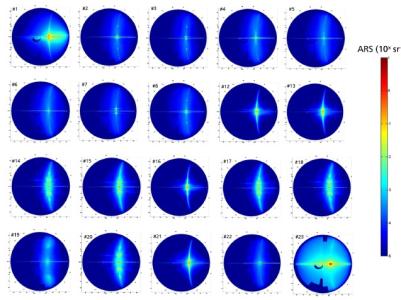Low stray light diffraction grating
Programme
TDE
Programme Reference
T116-601MM
Prime Contractor
Fraunhofer Gesellschaft
Start Date
End Date
Status
Closed
Country
Germany

Objectives
To reduce the amount of scattered stray light created by a diffraction grating
Description
With increasing demands on the sensitivity of remote sensing optical instruments, stray light has become an ever more critical issue. Diffraction gratings, which are key components of most spectral analysis optical instruments, contribute a particularly high amount of scattered stray light due to manufacturing imperfections. Diffraction gratings often represent the strongest contributor of scatter in a modern high performance instrument.
While over the past decade new design and manufacturing techniques have brought about an immense increase in design flexibility and grating performance as regards geometric realisation (e.g. freeform surfaces), spectral parameters (spectral distribution, resolution, dispersion) and diffraction efficiency, the generation of scattered stray light due to manufacturing imperfections of the grating structure still represents a contrasting issue.
Regular variations of the grating grooves lead to the creation of ghost orders ("satellites"), while random variations create random scatter. For example, for ruled gratings the causes are typically mechanical variations during the ruling process. Techniques using etching processes typically feature stitching inaccuracies of the lithographic stepping process and small random variations of the grating grooves caused by fluctuations of the etch flow. Holographic techniques typically feature groove variations caused by imperfections of the illumination optics and possibly illumination laser speckle.
The proposed activity shall investigate for at least one modern grating technology the possibilities to improve design and manufacture with the goal of minimising stray light caused by grating imperfections.
The activity encompasses the following tasks:
- Investigation of the causes for scatter for the given design and manufacturing technology
- Proposition and elaboration of possible ways for improvement
- Implementation of at least the most promising option
- Verification by test
Application Domain
EO-Earth Observation
Technology Domain
16-Optics
Competence Domain
5-Radiofrequency & Optical Systems and Products
Keywords
2-Optical Payloads
Initial TRL
TRL 1
Target TRL
TRL 4
Achieved TRL
TRL 4
Public Document
Final Presentation
